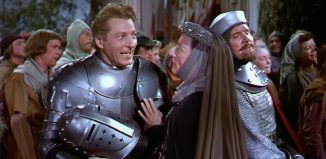Hitting the right note, eventually
We go so far even when we don’t seem to go anywhere. Our daughter’s jazz band played the same repertoire for the last few months, with the same solos, the same black pants for most of the group and the same introduction to the numbers from an incredibly positive and energetic conductor.
The first time they played compositions such as “Take the ‘A’ Train,” written by Billy Strayhorn and made famous by Duke Ellington, they sounded as if they were trying on clothing that didn’t exactly fit. They had their moments when they played together and some of the solos filled the room with the kind of spontaneous, live performance sounds you can’t soak in even with the finest video recording devices.
The group also had a few unsteady and discordant sounds. The problem with playing arrangements people in the audience know is that they recognize when the note isn’t exactly right, and they react when the entrance is too early or too late in a transitional phrase.
The audience wanted to let the music wash over them the first time they heard it, but they were like passengers on an airplane that ran into turbulence. They smiled through it, willing their sons and daughters to cleaner phrases, better sounds and a uniform performance.
A few weeks later, the group played the same music again and, ever so slightly, they improved. One of the players seemed to own the first few measures of her solo, turning several heads toward the stage as she directed her sound squarely into a microphone.
At the end of that performance, the applause seemed bigger — and so did the musicians.
Time after time, this group came together, working its way from guessing at notes to hitting them with the same energy as a “Jeopardy!” contestant who can barely wait to win money.
Recently, the jazz band had its final concert. Most of the players, who had performed together for close to two years, would be disbanding as they went off to high school. Yes, they will likely play some music again together, but the combination of two middle schools meant this was the last time these people would share music with their parents, families and community members.
Something about this final night felt different, even as they sauntered to their seats. Gone were the unsteady footsteps and the anxious looks.
The conductor, whose smile hadn’t changed from the first performance, snapped his fingers to the jazz rhythms — in contrast to classical music, where a baton is used. The group nailed that final concert, with each solo better than the one before and each chord coming together the way the composer intended. Could it have been better? Sure, and it will be better in high school and beyond. On this night, though, when the musicians put their instruments back in their cases and prepared to walk their individual paths, they shared everything they had on the stage with their appreciative audience.
The conductor took a moment, toward the end of the performance, to thank the musicians and the audience for sharing the three years of middle school with him. He commented on the changes he’d seen in them as people and as musicians, watching them enter when they were 11 from primary school and exit to high school as 13- and 14-year-olds.
As these young students consider the uncertainty of high school, with moments when school, music, sports and friends suddenly seem filled with awkward tension, they can reflect on the musical journey they’d taken and the music they conquered together.






